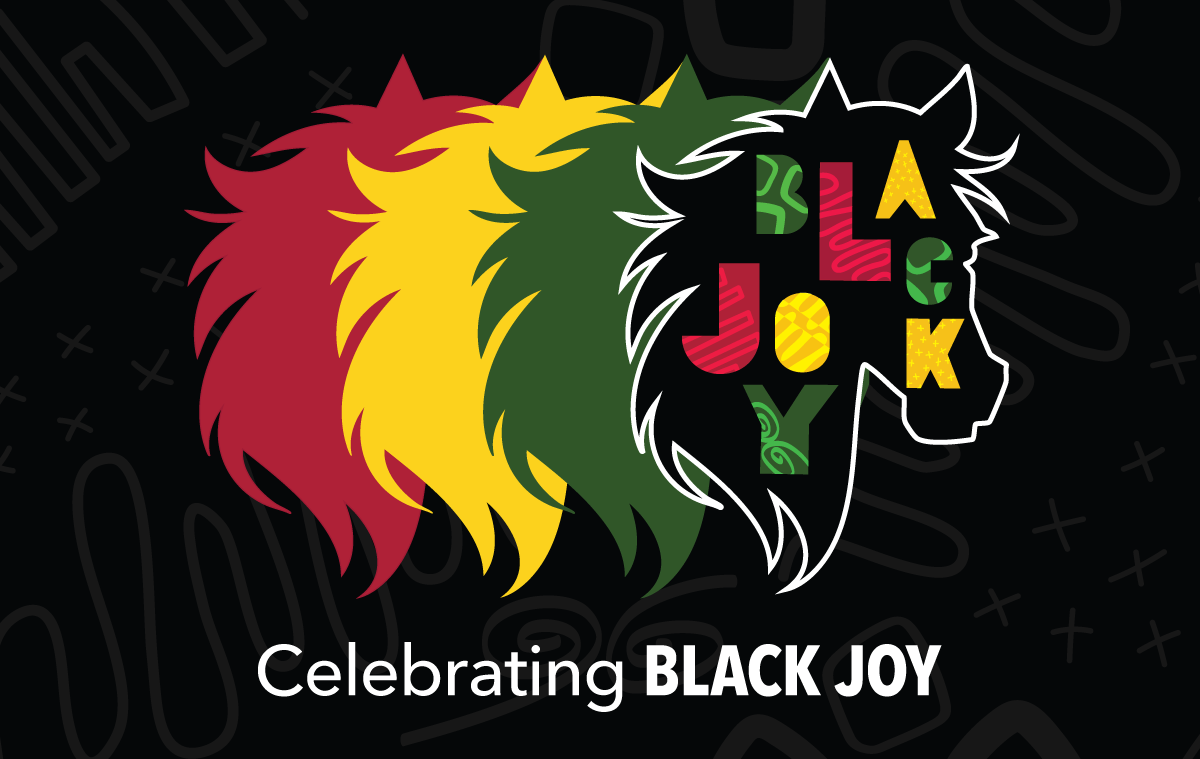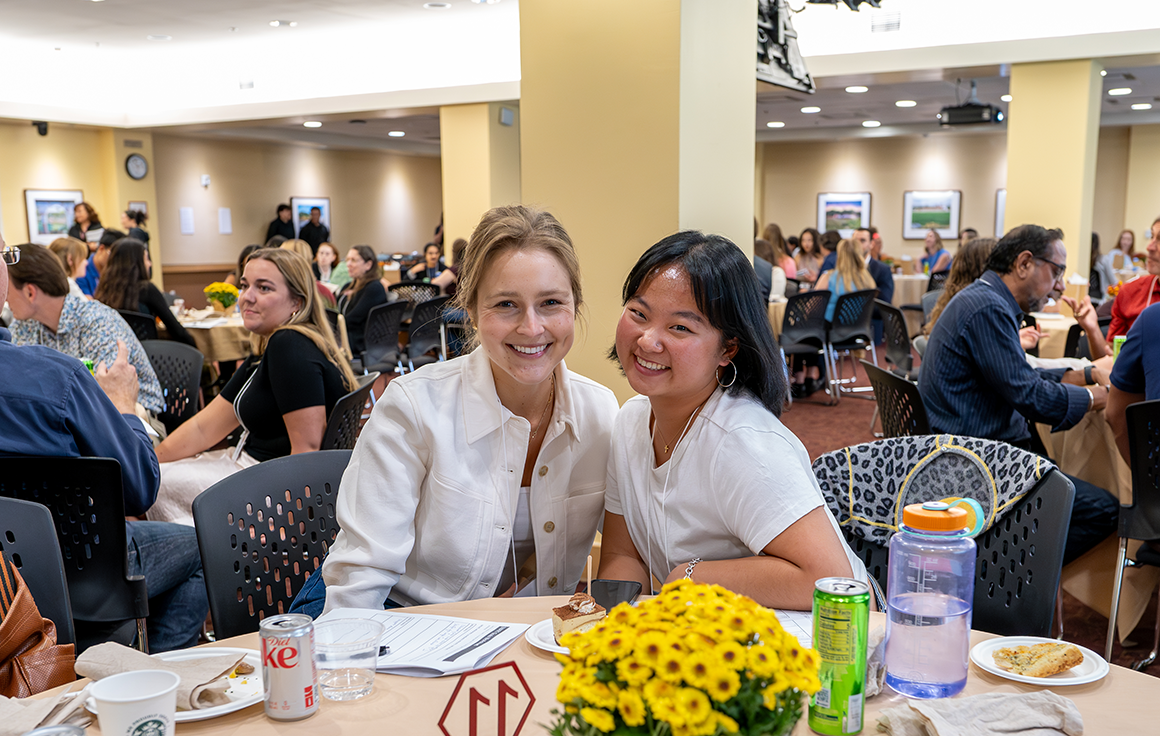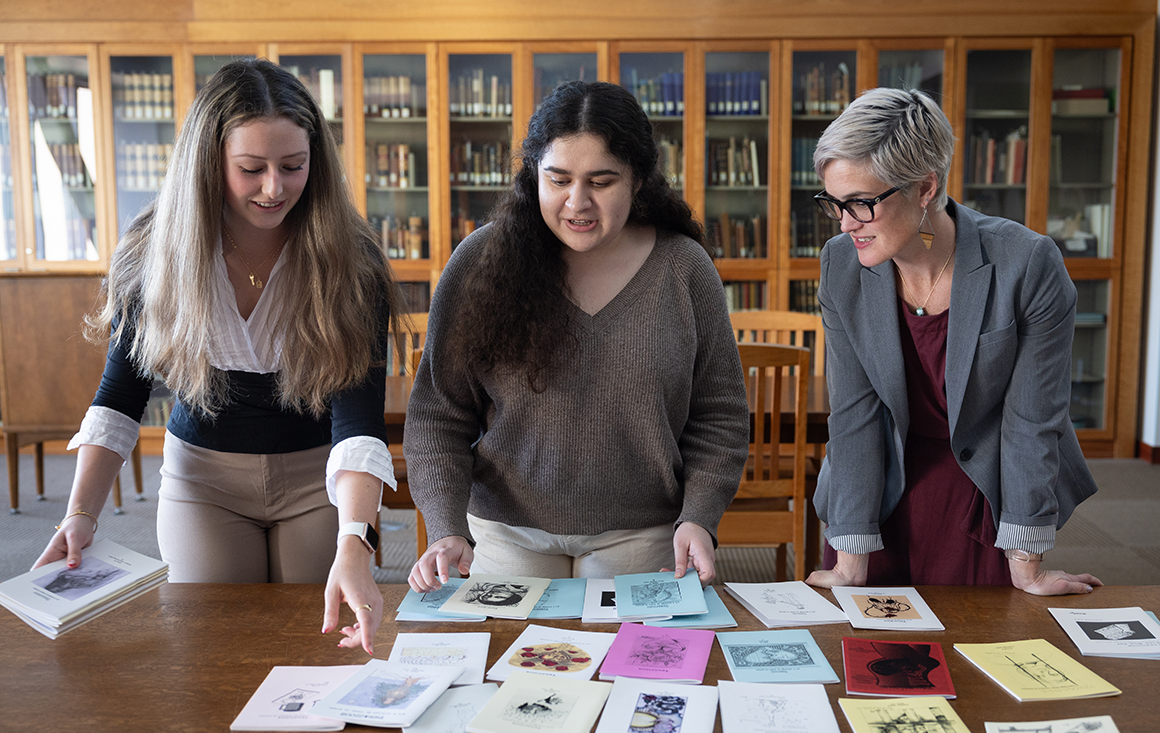‘Bigger Than Just Me’
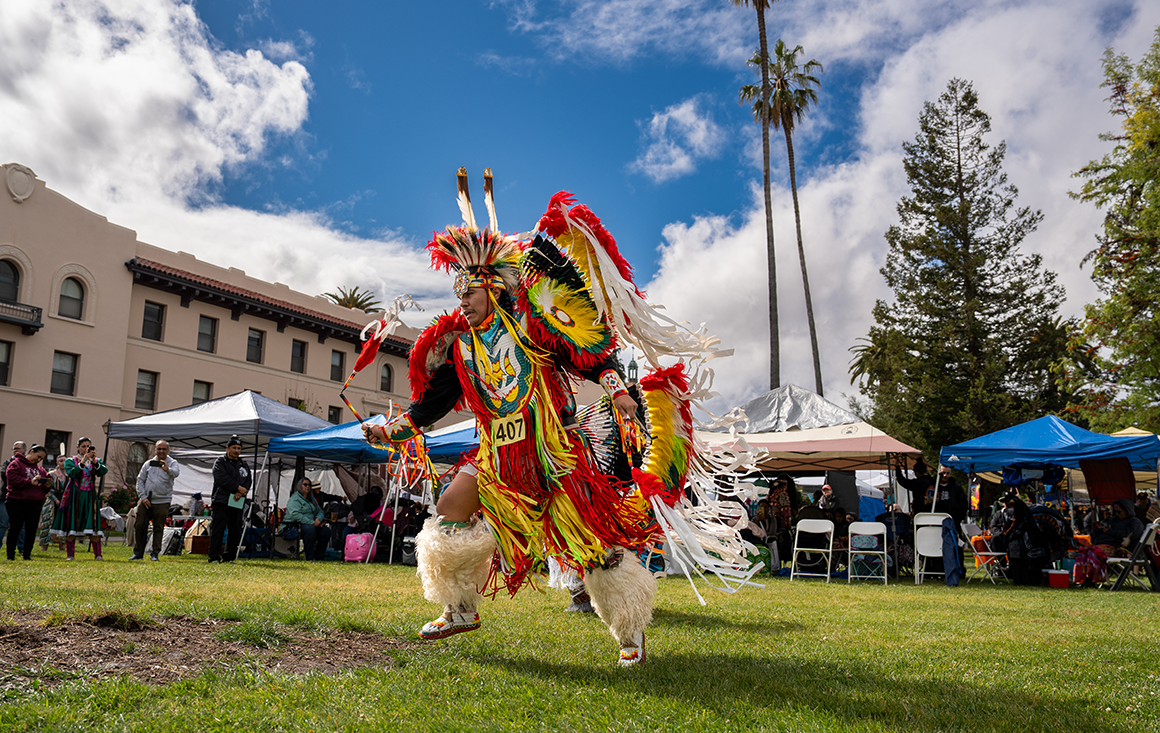
Even a rainy day couldn’t dampen the spirits of those attending Santa Clara University’s fourth annual PowWow where community members shopped for intricately-beaded jewelry and dreamcatchers, munched on tacos, and listened to the pounding of drum circles.
Powwows are festive, family-friendly gatherings where Native American tribes come together to share dances, songs, food, and other cultural practices—and in recent years, some have expanded to include Indigenous groups from outside of the United States, like Aztec and Polynesian dancers.
“I think it's awesome,” says Claire Alford ’25. “All the different dances, regalia, and crafts just show people that Indigenous people are everywhere and there’s so much diversity among us.”
Alford, a descendent of the Absentee-Shawnee Tribe of Oklahoma, serves as the president of Santa Clara University’s Native American Coalition of Change (NACC) and has seen the SCU PowWow’s growth into an event bustling with so many local indigenous vendors that they’re looking for a bigger space for next year.
But for many student organizers, the event’s success goes much deeper.
“It sounds a little cliché, but I really felt our ancestors standing with us,” says NACC treasurer Jacklyn Alonzo Heredia ’26. “And seeing all the artists and vendors and head staff who made this all happen, I was like, ‘Whoa this is bigger than just me.’”
This sentiment was emphasized by the PowWow’s opening welcome and land acknowledgment given by representatives of the Muwekma Ohlone tribe who trace their lineage through the Missions Santa Clara, San José, and Dolores.
Over the past few years, Santa Clara and the Muwekma Ohlone have collaborated on several projects bolstering indigenous history, representation, and community-building. In fact, after almost a year of development and testing, a new augmented reality tour of indigenous landmarks around campus was officially released to the public at this year’s PowWow.
Given the momentum surrounding these projects and so many ways to get involved, joining NACC is a great way to get started, says Alford.
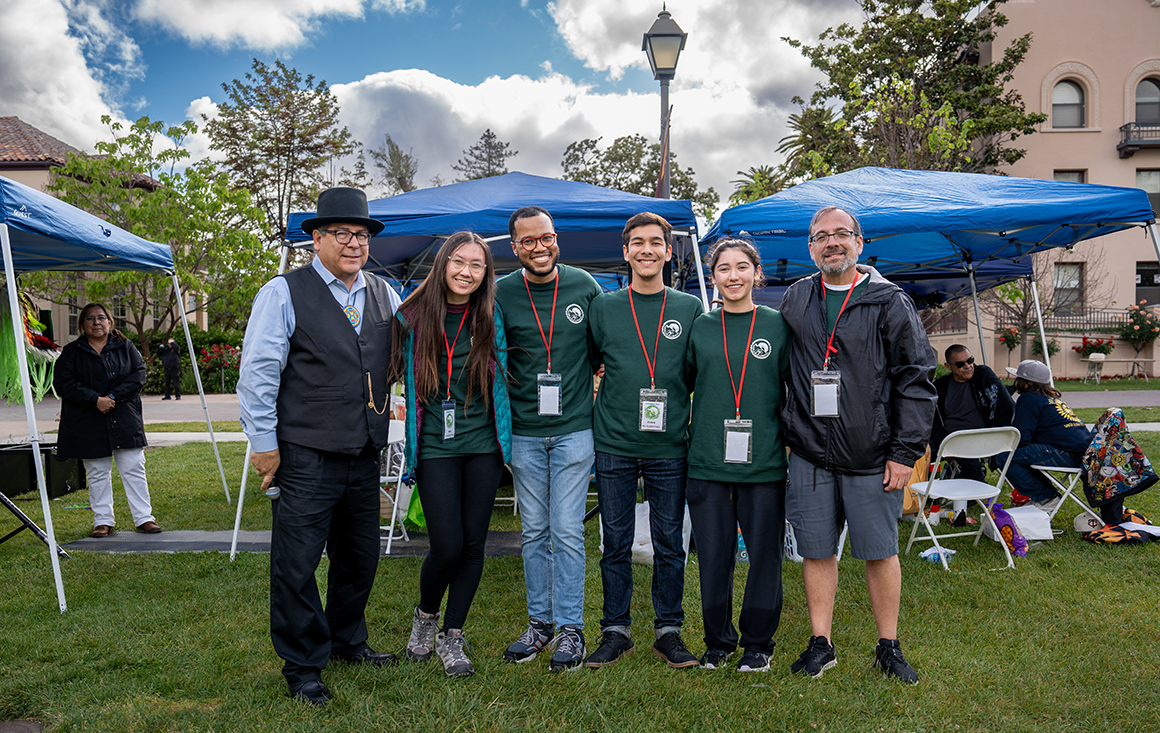
Fine and Alford (third and second from right) and fellow NACC and PowWow Planning Committee members.
Strength in numbers
With 574 federally recognized tribes, several hundred unrecognized tribes, and countless indigenous peoples outside of the United States—there is no ‘one size fits all’ when it comes to indigenous heritage.
Whether a student spent their life on a reservation or dancing in powwows, or is simply looking to learn more about their heritage, NACC is dedicated to creating opportunities for students to support indigenous people and culture.
The best part? Everyone is welcome. You don’t even need to have indigenous heritage to become a member, says NACC vice president Evan Fine ’25—he remembers being invited by Alford to join before she even knew he was part-Cherokee.
As a freshman, Fine was already interested in connecting more with his Cherokee heritage, but what really appealed to the ASG Senate Chair was the club’s dedication to public service. The group leads Native American Heritage Month presentations at a local elementary school, donates hygiene kits to the nearby Indian Health Center, and of course, helps plan the SCU PowWow.
“So much about native culture is about giving back, and that’s what NACC is really about,” Fine says. “We’re a small, tight-knit group working towards a singular goal—and that goal is never in question.”
Being at a university with a small native population, Heredia adds that having strength in numbers is crucial to making meaningful change.
“Personally, coming to Santa Clara was really rough transition and I didn’t feel like I fit in,” she says, mentioning her Mayan heritage. “But joining NACC and knowing that there were so many people unaffiliated with native heritage willing to back not only me, but my culture and ancestors—I can’t even put into words how important that felt.”
For anyone curious about getting involved but worried about not having much tribal knowledge or experience, you’re not alone and it shouldn’t hold you back, Fine says. The only wrong approach would be to not get involved at all.
“Native culture is proud; it’s rich in history and depth,” he adds. “Immersing yourself in that environment—an environment that champions serving the community—is going to be an experience that you’ll remember for the rest of your life.”
NACC's goal is to provide a safe space for Native students, celebrate Native traditions, and promote inclusion across campus.
